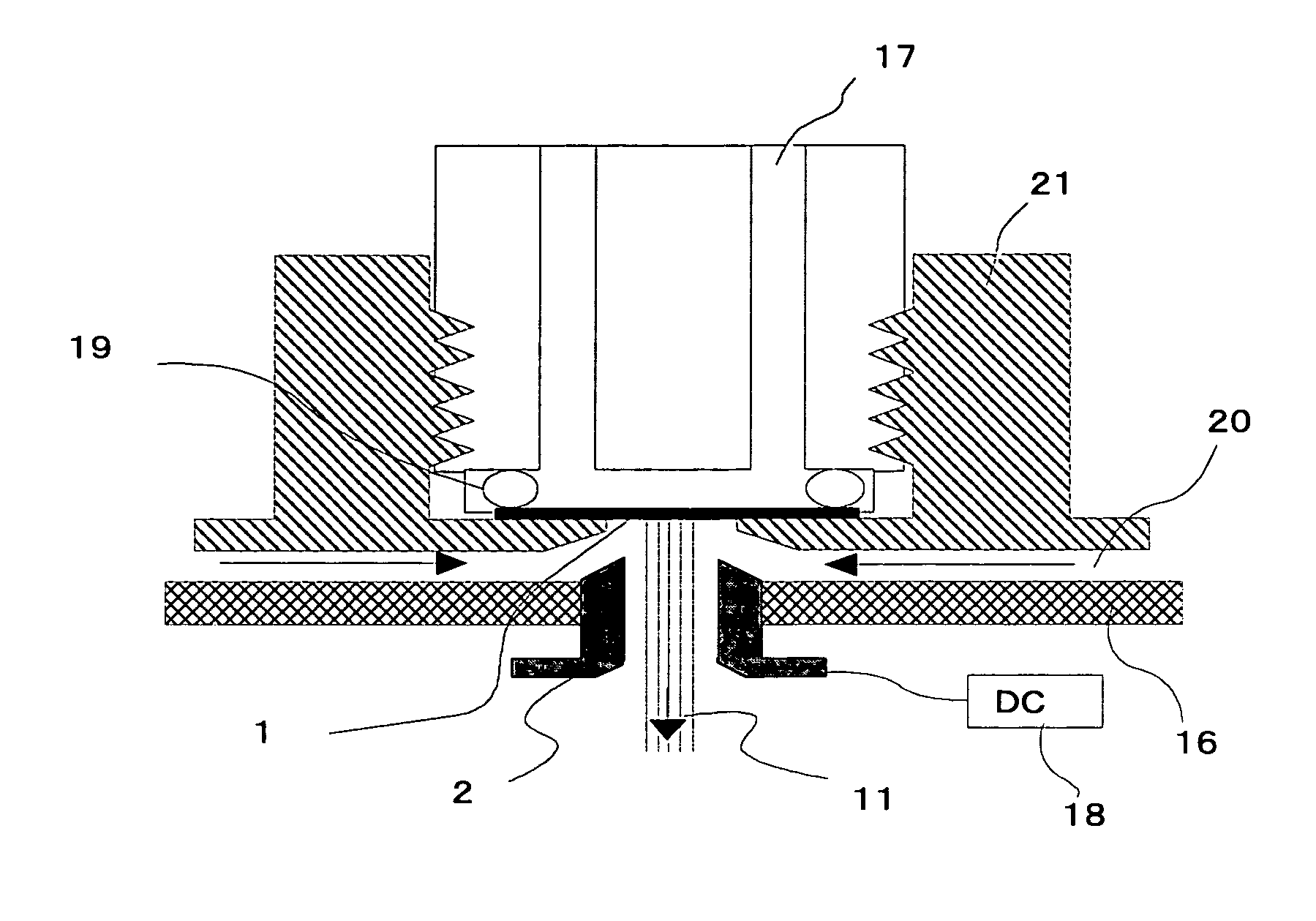Method for producing a toner, and toner
a technology of toner and toner plate, applied in the direction of granulation using vibration, instruments, developers, etc., can solve the problems of poor productivity, large amount of washing water required, impaired environmental stability, etc., and achieve the effect of increasing the number of ejection holes with ease, sufficient productivity, and accurately calculated
- Summary
- Abstract
- Description
- Claims
- Application Information
AI Technical Summary
Benefits of technology
Problems solved by technology
Method used
Image
Examples
example 1
—Preparation of Colorant Dispersion—
[0212]First, a dispersion of carbon black was prepared as a colorant dispersion.
[0213]To 82 parts by mass of ethyl acetate, 15 parts by mass of carbon black (Regal 400, manufactured by CABOT Corp.), 3 parts by mass of a pigment dispersing agent was added and primarily dispersed using a mixer having a stirring blade. For the pigment dispersing agent, AJISPER PB821 (manufactured by Ajinomoto Fine-Techno Co., Inc.) was used. The obtained primary dispersion was subjected to a strong shearing force using DYNO MILL to finely disperse the dispersion to thereby prepare a secondary dispersion that the aggregate had been completed removed. Further, the secondary dispersion was passed through a filter having fine pores of 045 μm (manufactured by PTFE) to prepare a dispersion dispersed to submicrons.
—Preparation of Resin and Wax-added Dispersion—
[0214]Next, a dispersion containing the following composition and to which a resin as a binder resin, and a wax wer...
example 2
[0238]An intended toner was obtained in the same manner as in Example 1 except that the diameter of the ejection hole was changed to 5 μm, and the concentration of solid parts of the toner was increased to 8 times the concentration of solid parts in Example 1. Consequently, the toner had a weight average particle diameter of 6.0 μm and a number average particle diameter of 6.0 μm, and it was also possible to obtain completely monodisperse toner base particles.
[0239]The obtained toner was evaluated with respect to the properties. Table 1 shows the evaluation results.
example 3
[0240]An intended toner was obtained in the same manner as in Example 1 except that the diameter of the ejection hole was changed to 20 μm, and the concentration of solid parts of the toner was reduced to 0.125 times the concentration of solid parts in Example 1. Consequently, the toner had a weight average particle diameter of 6.0 μm and a number average particle diameter of 6.0 μm, and it was also possible to obtain completely monodisperse toner base particles.
[0241]The obtained toner was evaluated with respect to the properties. Table 1 shows the evaluation results.
PUM
 Login to View More
Login to View More Abstract
Description
Claims
Application Information
 Login to View More
Login to View More - R&D
- Intellectual Property
- Life Sciences
- Materials
- Tech Scout
- Unparalleled Data Quality
- Higher Quality Content
- 60% Fewer Hallucinations
Browse by: Latest US Patents, China's latest patents, Technical Efficacy Thesaurus, Application Domain, Technology Topic, Popular Technical Reports.
© 2025 PatSnap. All rights reserved.Legal|Privacy policy|Modern Slavery Act Transparency Statement|Sitemap|About US| Contact US: help@patsnap.com



